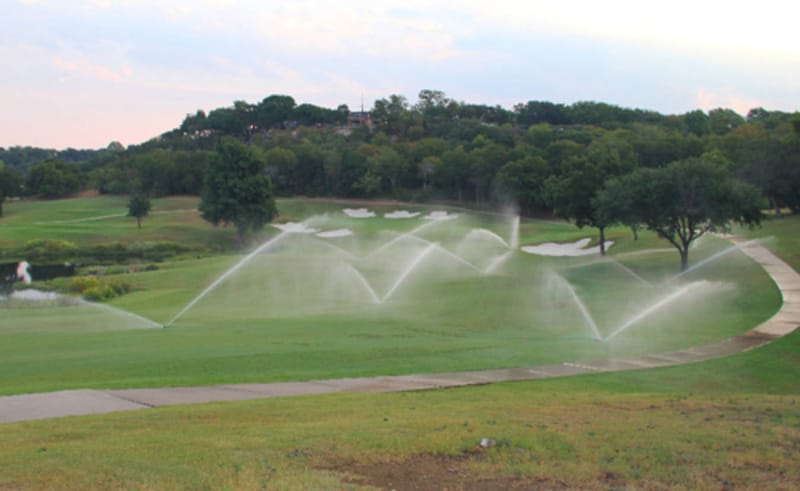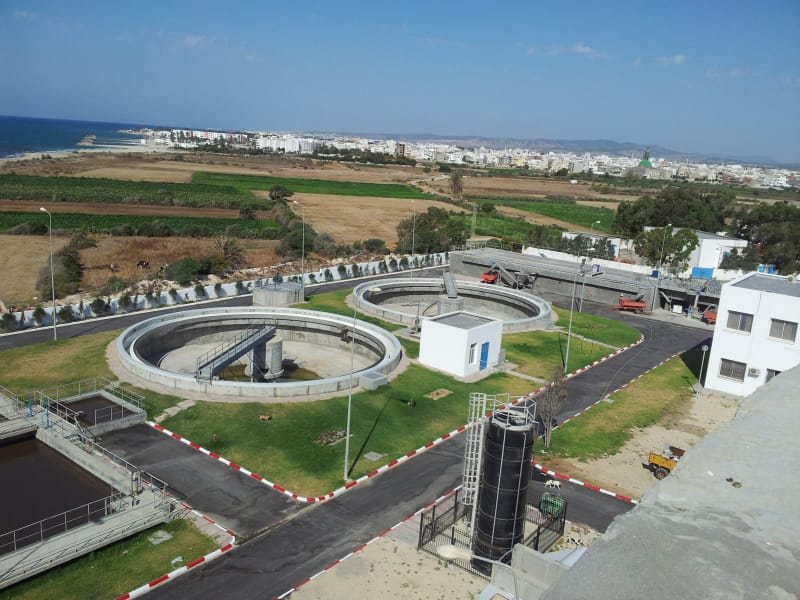Enhancing Sustainability in Golf Course Management and Irrigation Practices
Treated Sewage Reuse for Irrigation
In the pursuit of environmental sustainability, golf course management has emerged as a focal point for innovation and responsible water stewardship. With the increasing pressure to conserve freshwater resources and minimize ecological impact, the adoption of treated sewage reuse for irrigation offers a compelling solution. This comprehensive approach not only addresses water scarcity concerns but also contributes to cost savings, nutrient management, and environmental protection. In this in-depth exploration, we delve into the key aspects of utilizing treated sewage for golf course irrigation, from water source and treatment processes to infrastructure development, irrigation management practices, and future trends.

Water Source and Treatment Process
Treated sewage, sourced from municipal wastewater treatment plants, undergoes a rigorous treatment process to meet stringent water quality standards for irrigation. This process includes primary, secondary, and tertiary treatment stages, incorporating advanced technologies such as membrane filtration, reverse osmosis, and UV disinfection. These treatments ensure the removal of contaminants such as pathogens, nutrients, heavy metals, and organic compounds, rendering the reclaimed water safe and suitable for irrigation purposes.
Water Quality Standards and Monitoring: For recycled water to be used for water supply, regulatory bodies set and enforce water quality standards and suggestions for improvement. The safety of the irrigation supply and compliance to these criteria are ensured by ongoing evaluation and tracking of the recovered water. To maintain the quality of water and protect the health of the environment, parameters such total suspended solids, phosphate, pH, turbidity, nitrogen compounds, biochemical demand for oxygen, and coliform bacteria from feces are routinely evaluated.
Distribution Infrastructure
Robust water distribution infrastructure is essential for conveying treated sewage from the treatment plant to irrigation points across the golf course. This infrastructure comprises pipelines, pumps, valves, storage reservoirs, and irrigation controllers. The system is designed to accommodate varying water demands across different areas of the course and provide uniform water distribution to ensure optimal turf health and playing conditions.
Irrigation Management Practices:
Minimizing the impact on the ecosystem and increasing the efficiency of water usage both depend on effective irrigation management. In order to prevent overwatering or underwatering, practices involve scheduling irrigation in accordance with turfgrass water requirements, soil moisture levels, and atmospheric conditions. Weather stations, computerized irrigation systems, and soil moisture sensors are a few examples of technologies which render it possible to accurately monitor and adjust irrigation schedules, maximising water use and turf health.
Benifits of Treated Sewage Reuse:
- Environmentally Friendly: Using treated sewage for irrigation is eco-friendly, as it reduces the demand for freshwater and lessens the strain on natural water sources.
- Cost-Effective: It saves money for golf courses since treated sewage is often cheaper than purchasing potable water for irrigation purposes.
- Soil Health Improvement: Reclaimed water contains nutrients that enrich the soil, promoting healthier turf growth and reducing the need for artificial fertilizers.
- Nature Conservation: By reusing treated sewage instead of discharging it into rivers, golf courses help preserve aquatic ecosystems and wildlife habitats.
- Sustainable Practices: Incorporating treated sewage reuse into golf course management ensures sustainable water use, benefiting both the environment and the course's long-term viability.

Addressing Challenges and Considerations:
Public Perception and Acceptance:
Implementing treated sewage reuse for golf course irrigation faces a significant obstacle: public perception and acceptance. Concerns about the safety and quality of reclaimed water, particularly for recreational areas like golf courses, are prevalent. To combat these concerns, education, communication, and transparency are paramount. Golf course management must engage in outreach efforts to inform the public about the stringent treatment process sewage undergoes to become reclaimed water. By offering clear explanations of the treatment process and the regulatory oversight ensuring water quality standards, golf courses can instill trust and confidence in reclaimed water's safety for irrigation.
Regulatory Compliance:
Meeting regulatory requirements is crucial when adopting treated sewage reuse for golf course irrigation. Regulatory agencies establish standards and guidelines for water quality, irrigation practices, and environmental protection to protect public health and the environment. Golf courses must maintain ongoing monitoring, reporting, and adherence to these standards to remain compliant. This necessitates dedicated resources and expertise to effectively manage and oversee the irrigation system. Staying updated on regulatory changes and investing in robust monitoring and reporting mechanisms demonstrates golf courses' commitment to compliance and environmental stewardship.

Infrastructure Investment:
Establishing the necessary distribution infrastructure and irrigation systems for treated sewage reuse requires substantial upfront capital investment and ongoing operational costs. Constructing pipelines, pumps, valves, storage reservoirs, and irrigation controllers demands meticulous planning, engineering, and budgeting. Golf courses must consider various factors such as terrain, topography, water demand, and system capacity during infrastructure design and implementation. Furthermore, regular maintenance and repairs are essential to ensure the reliability and efficiency of the irrigation system over time. By prioritizing high-quality infrastructure and proactive maintenance practices, golf courses can minimize downtime and optimize the effectiveness of treated sewage reuse for irrigation.
Risk Management:
Addressing potential risks associated with reclaimed water use is essential to safeguard environmental and human health. Cross-contamination, nutrient leaching, and soil salinization are among the risks that must be managed effectively. Conducting thorough risk assessments, implementing mitigation measures, and developing contingency plans are critical steps in risk management. Golf courses must monitor water quality regularly, conduct soil testing, and adjust irrigation practices as needed to minimize risks and mitigate any adverse impacts. By prioritizing risk management and adopting proactive measures, golf courses can ensure the safe and sustainable use of treated sewage for irrigation while protecting the surrounding environment.
Future Trends and Innovation
Technological Advancements:
Ongoing research and development in wastewater treatment, water reuse technologies, and irrigation practices are driving innovation in the field. Advanced filtration systems, smart irrigation controllers, and precision agriculture techniques are among the emerging technologies offering potential benefits for enhancing the efficiency and sustainability of treated sewage reuse for golf course irrigation. By embracing these advancements and integrating new technologies into their irrigation systems, golf courses can enhance water use efficiency, lower operational costs, and reduce environmental impact. Staying informed about technological advancements and adopting relevant innovations positions golf courses at the forefront of sustainable water management practices.
Collaborative Partnerships:
Collaboration among stakeholders, including government agencies, water utilities, academia, industry associations, and environmental organizations, is essential for advancing sustainable water management practices. By working together, stakeholders can share knowledge, resources, and best practices to address common challenges and promote innovation in treated sewage reuse for irrigation. Collaborative partnerships also facilitate capacity building, training, and education initiatives to empower golf course management and staff to implement effective water conservation strategies.
Policy and Regulation
Evolving policy frameworks and regulatory measures play a crucial role in supporting the expansion of treated sewage reuse for irrigation. By providing incentives and guidelines for responsible water stewardship and environmental conservation, policymakers can encourage golf courses to adopt reclaimed water irrigation practices. Policy initiatives may include financial incentives, regulatory exemptions, and public awareness campaigns to promote the benefits of treated sewage reuse and overcome barriers to implementation. By advocating for supportive policies and actively engaging in the policymaking process, golf courses can contribute to the development of a conducive regulatory environment for sustainable water management practices.
In conclusion, treated sewage reuse for golf course irrigation represents a proactive and sustainable approach to water management in the golf industry. By leveraging advanced treatment technologies, robust infrastructure, and effective irrigation management practices, golf courses can enhance their environmental sustainability, reduce water consumption, and minimize their ecological footprint. However, addressing challenges related to public perception, regulatory compliance, infrastructure investment, and risk management requires collaborative efforts, innovative solutions, and ongoing commitment from all stakeholders involved. As the industry continues to evolve, treated sewage reuse will play an increasingly vital role in shaping the future of golf course management and environmental stewardship.